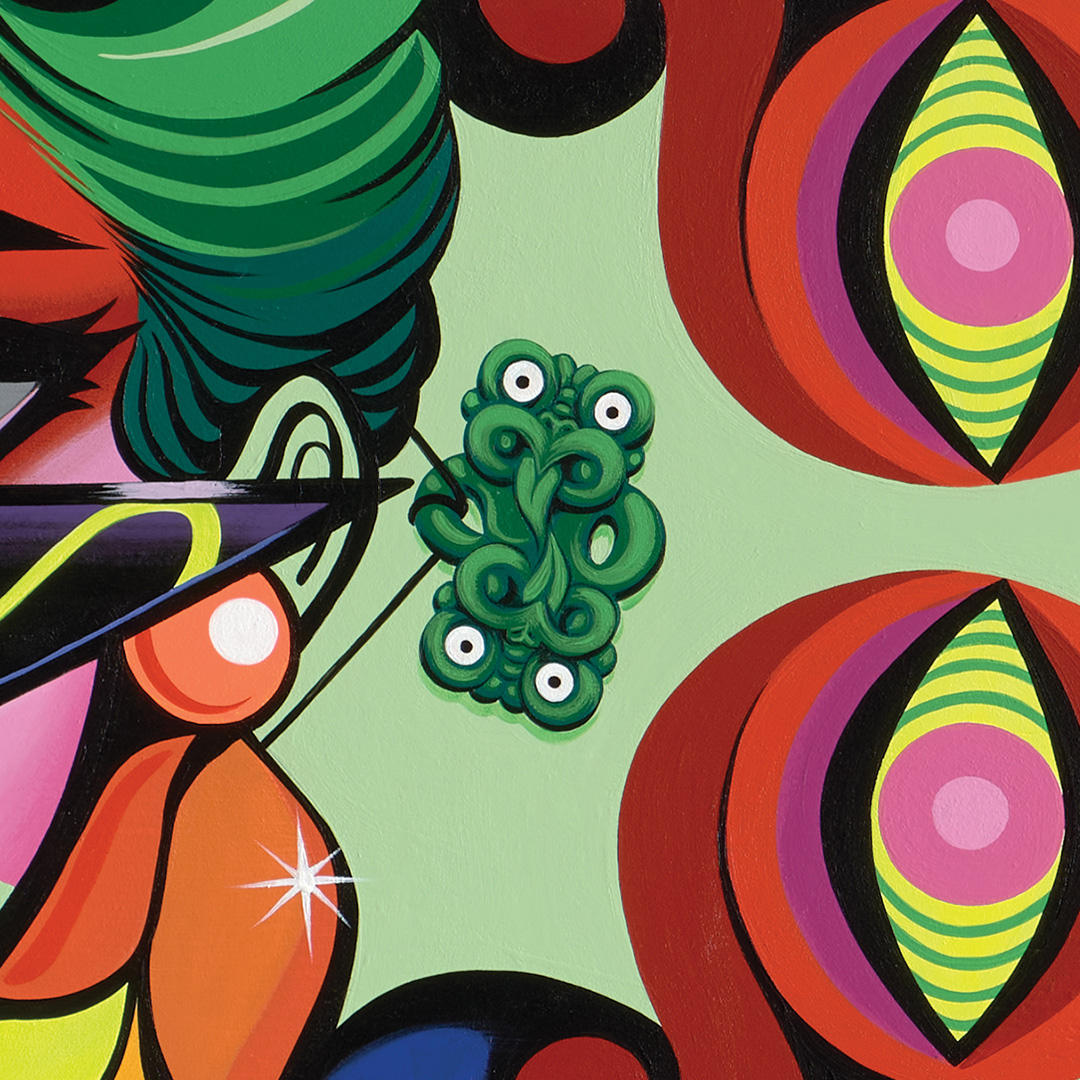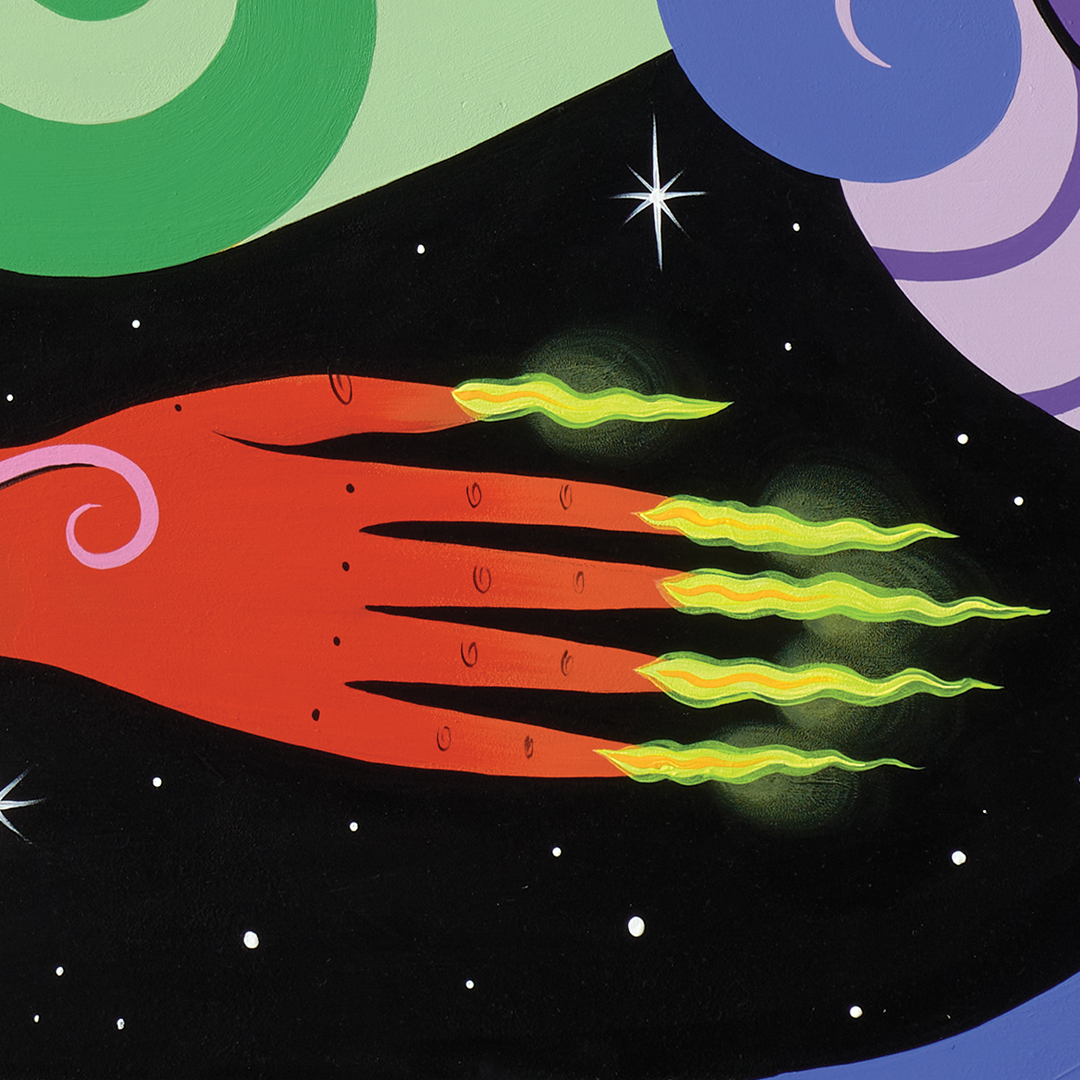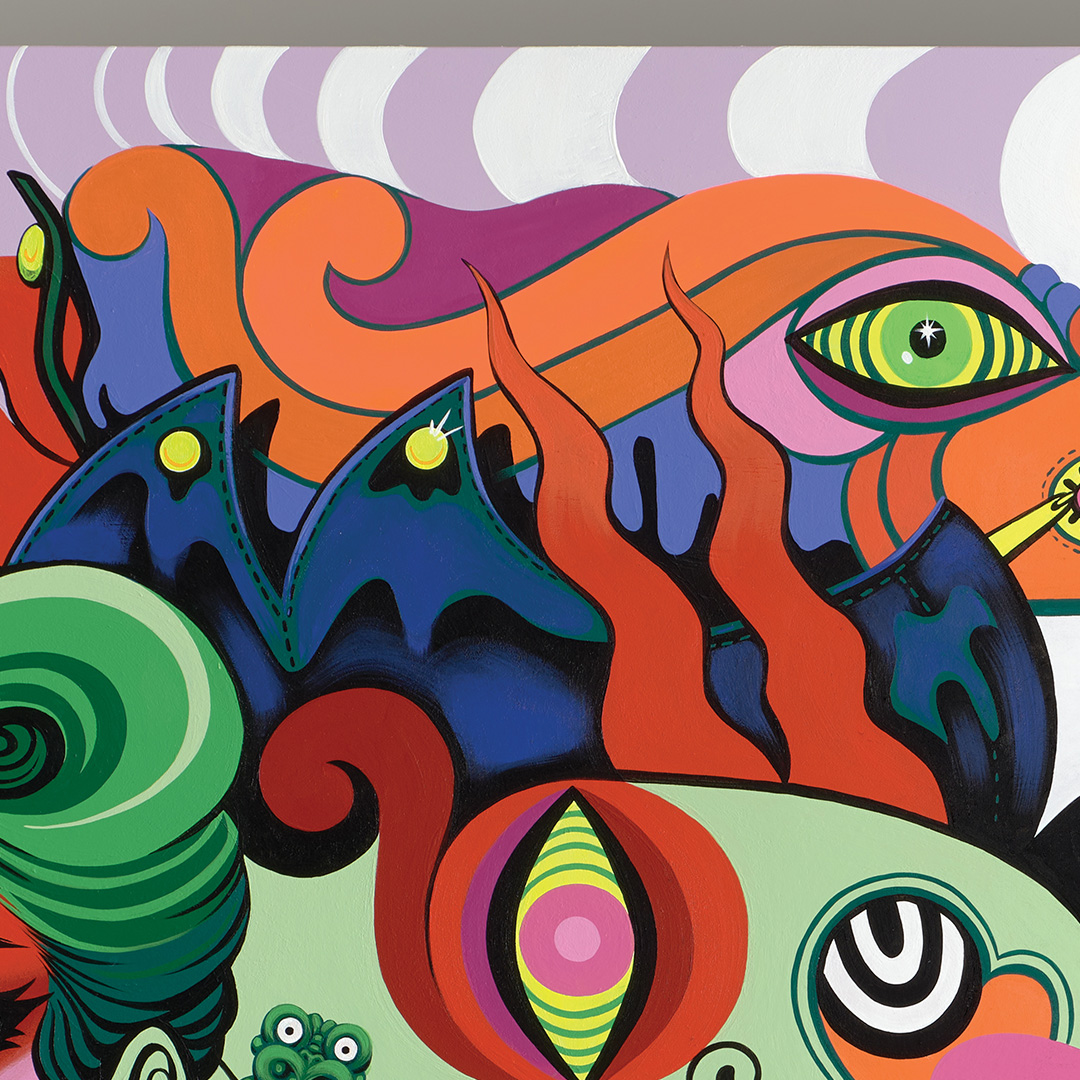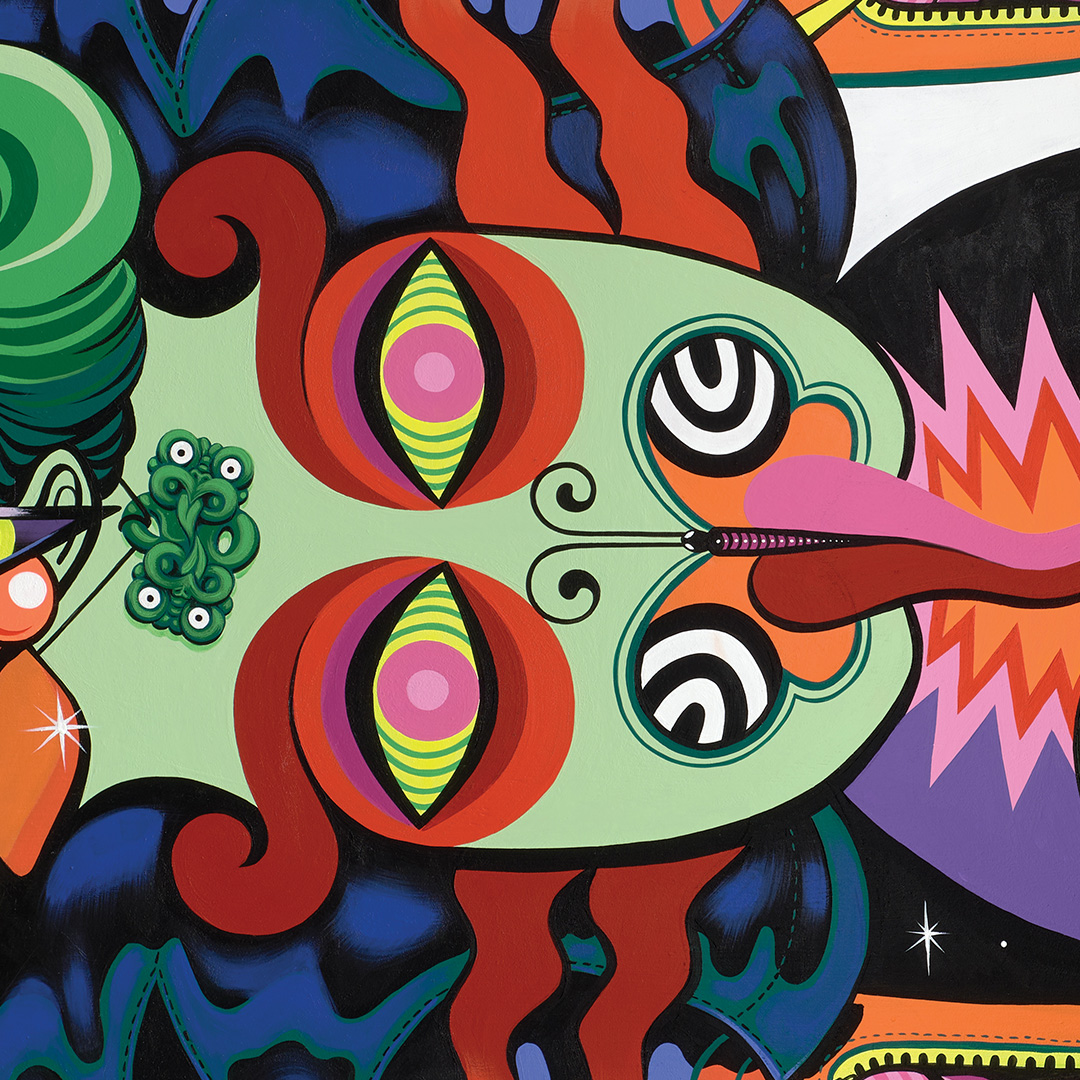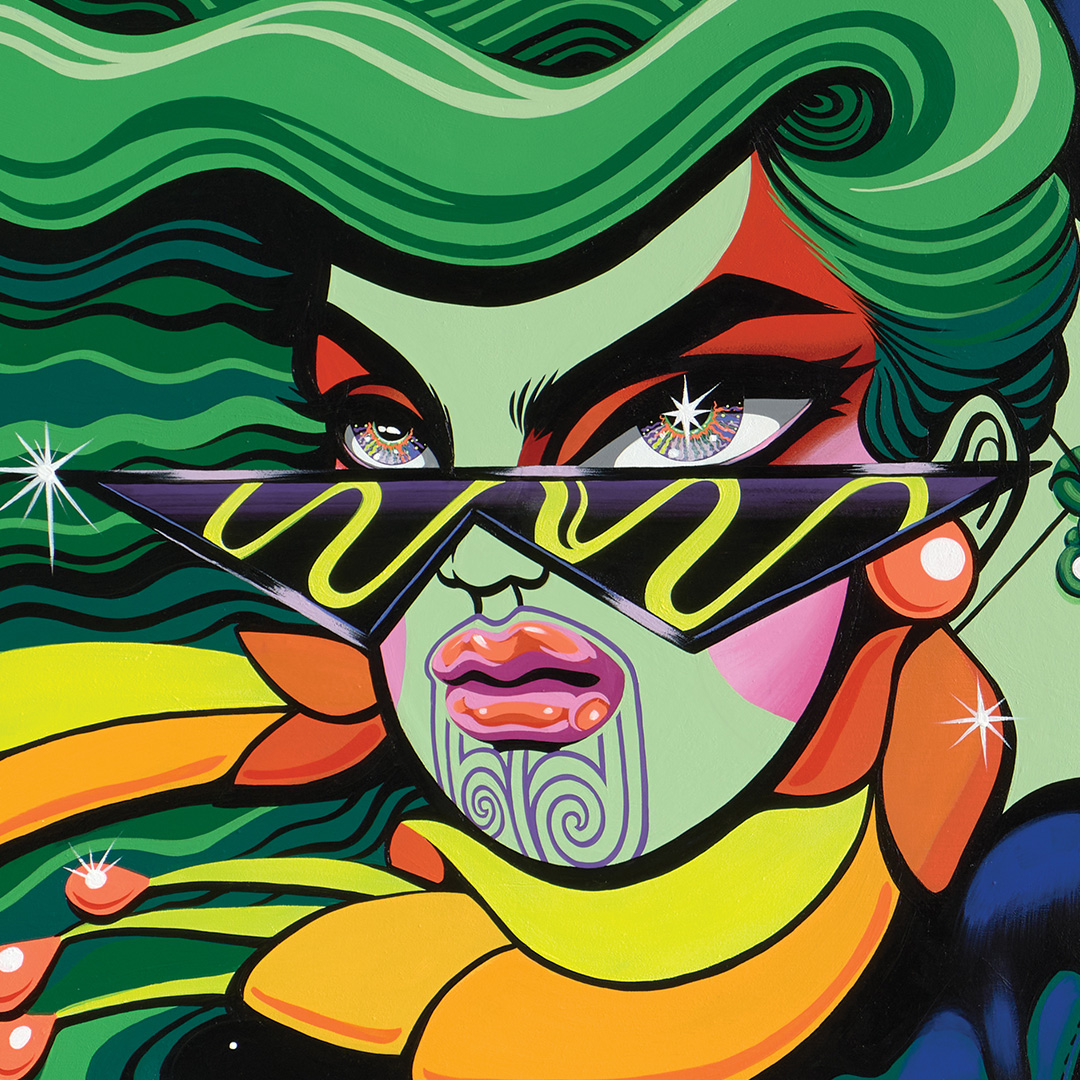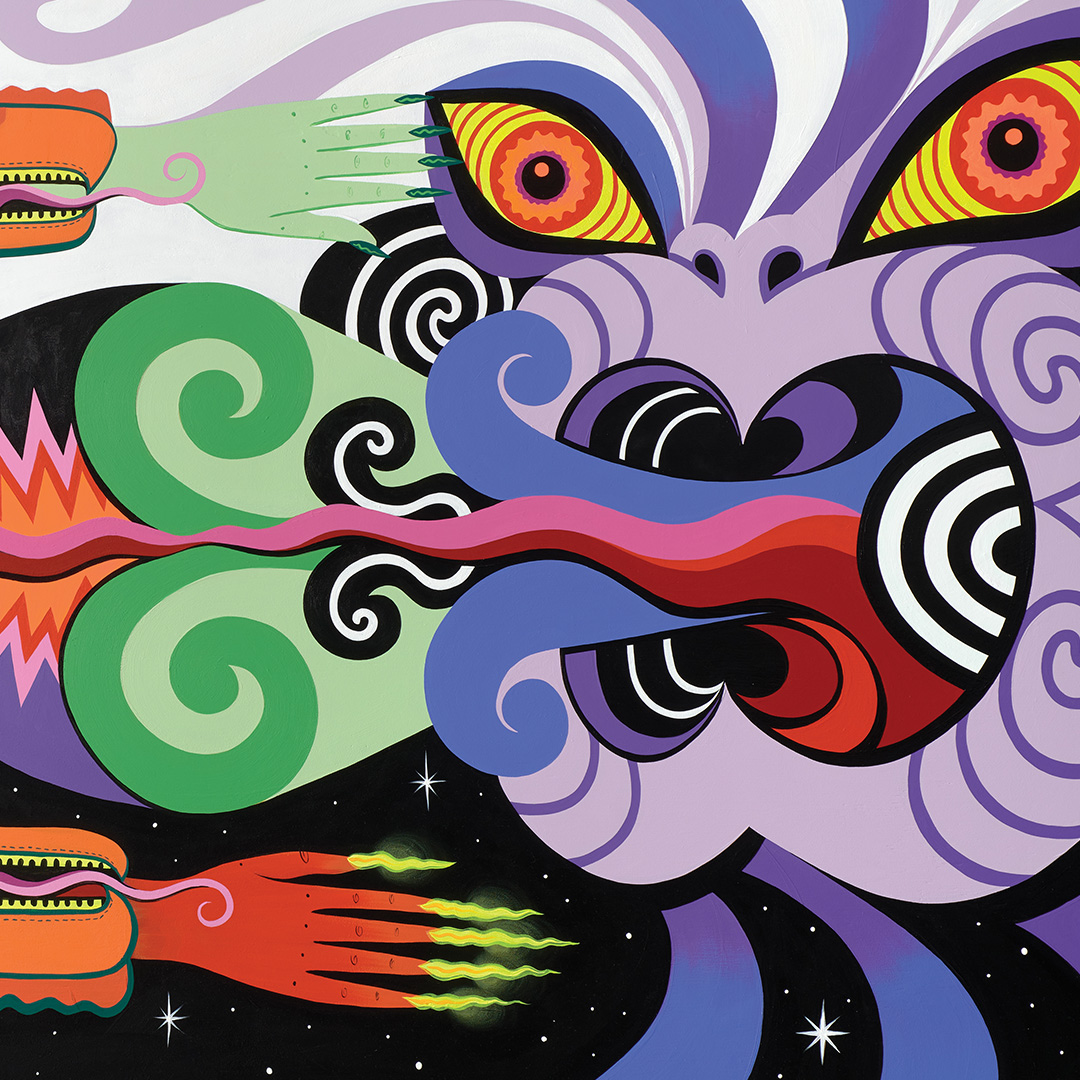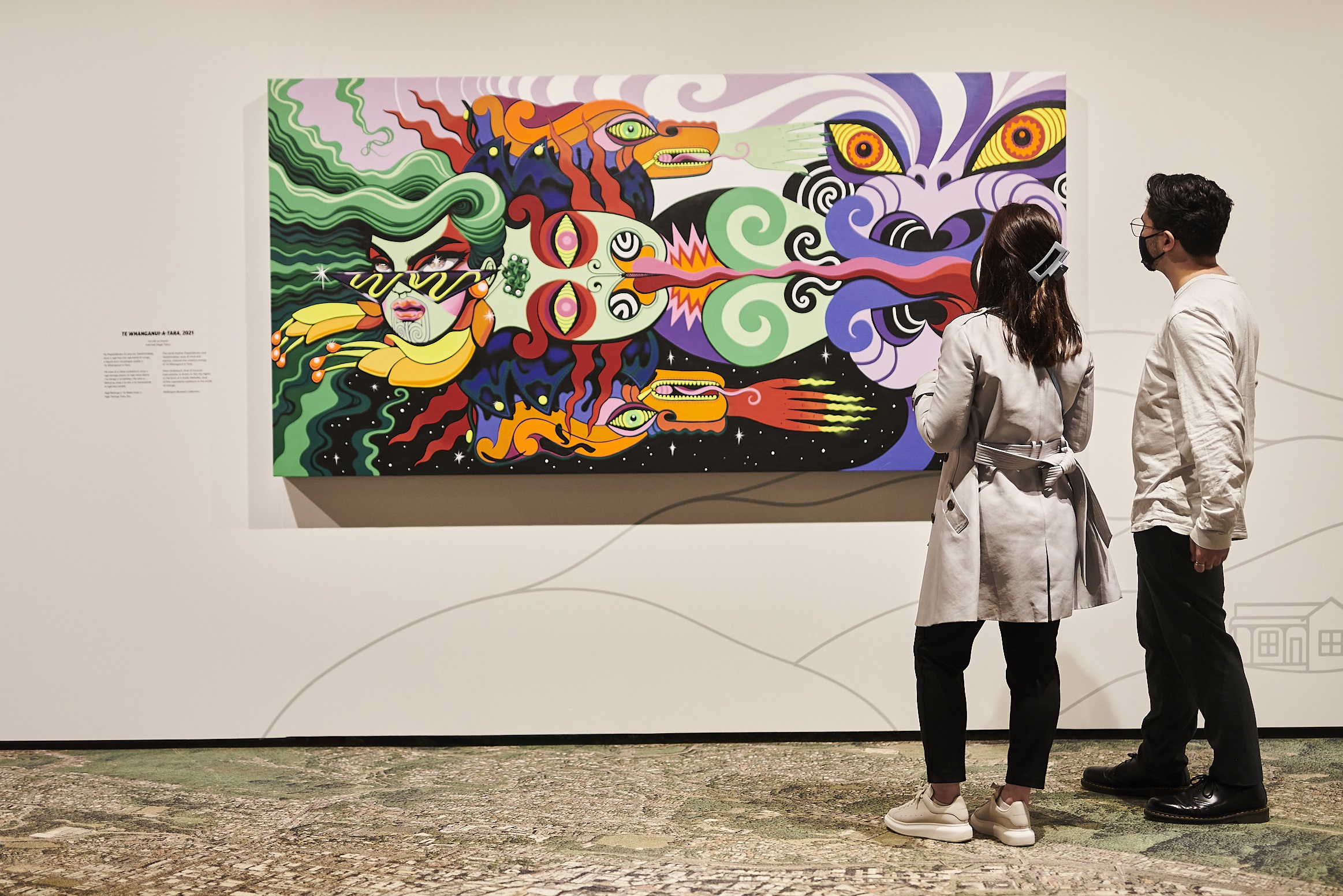Te Whanganui-a-Tara by Xoë Hall
By Ian Wards
By Ian Wards
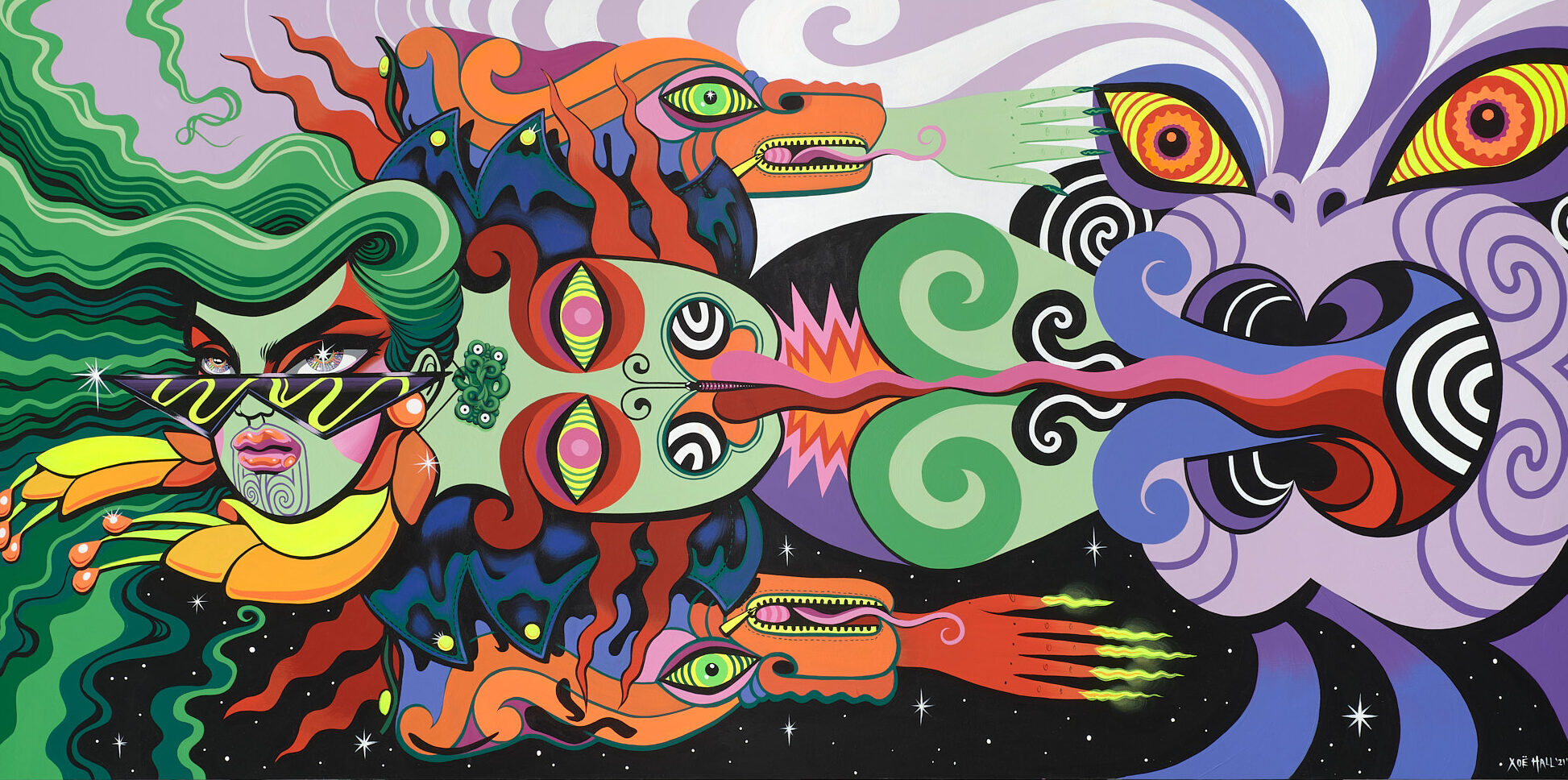
Wellington Museum asked Xoë Hall to create Te Whanganui-a-Tara artwork for our new ground-floor exhibition (of the same name) – Te Whanganui-a-Tara. This family-friendly exhibition explores the natural and cultural landscapes of Wellington.
Xoë Hall (Kāi Tahu) is a painter based in the Wellington region, who specialises in mural work. Mural work, by its very nature, is temporary, making it a challenging medium for museums to collect. It may be that few of Xoë’s murals survive in the long-term – due to exposure to weather and light, vandalism, building construction and destruction.
Having Xoë paint this artwork allowed Wellington Museum to preserve a popular part of Wellington’s current cityscape for present and future generations to enjoy.
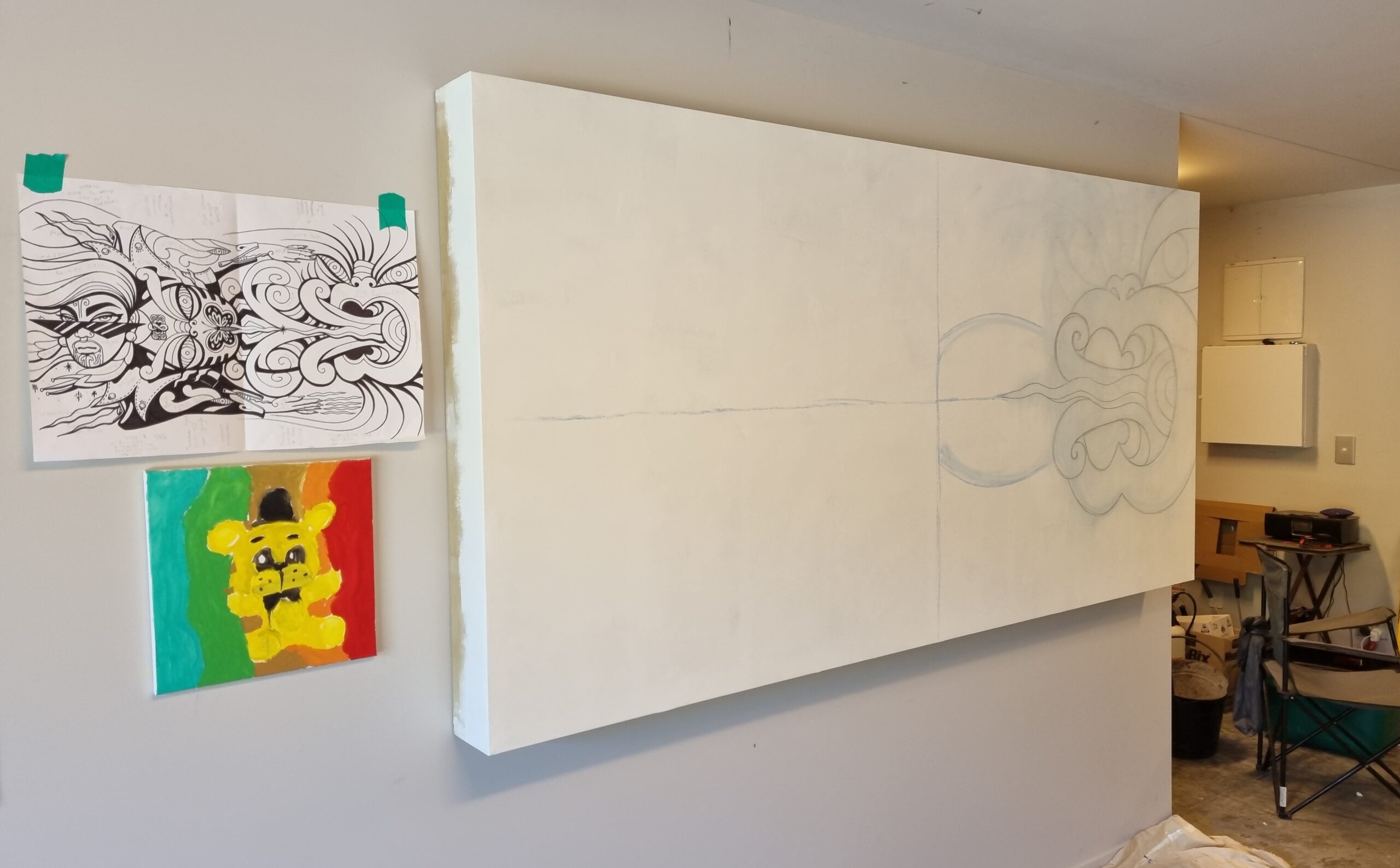
Wellington Museum’s curators suggested Xoë create a painting that formed a visual personification of the whenua, moana, awa, maunga, hau and ngahere of Te Whanganui-a-Tara (Wellington). The idea being that this would form a visual pepeha of this place.
Xoë was also asked to create the artwork in a way that would inspire rangatahi to respect and honour the environment, but give hope and courage for the environmental challenges they face in the future.
Of the creative process, Xoë says:
“As I was drawing I was trying to channel the energy of Pōneke city, wrapped up in the excitement of the wild wind sweeping over the whenua – which embraces the action but does not get swept away.
The atua that revealed themselve’s within the drawing are Papatūānuku – Earth Mother, symbolising the whenua; Tāwhirimātea – atua of wind and storms; and Hineraukatauri – atua wahine of Māori musical instruments, who is often personified as the case moth. We also have a guest appearance from Mahuika, atua of fire.
These atua come together to form a kaitiaki hybrid of the elements and creative vibes of Te Whanganui-a-Tara, working in unison.”
The stars of night can be seen reflected in the waters of the harbour, with the ridges of hills found in the form of Papatūānuku.
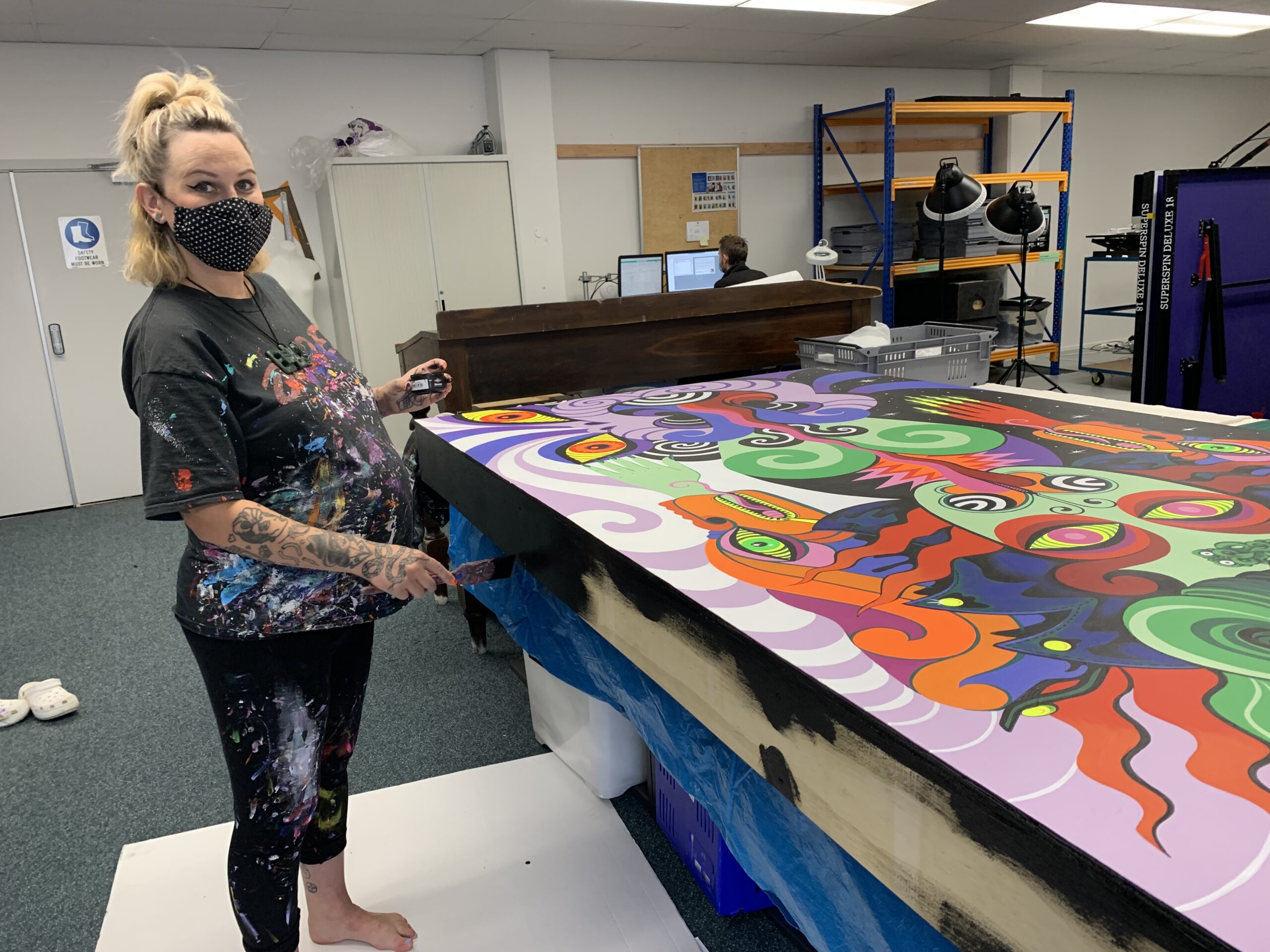
Many other symbolic elements, or ‘easter eggs’ as Xoë calls them, can be found in the artwork.
